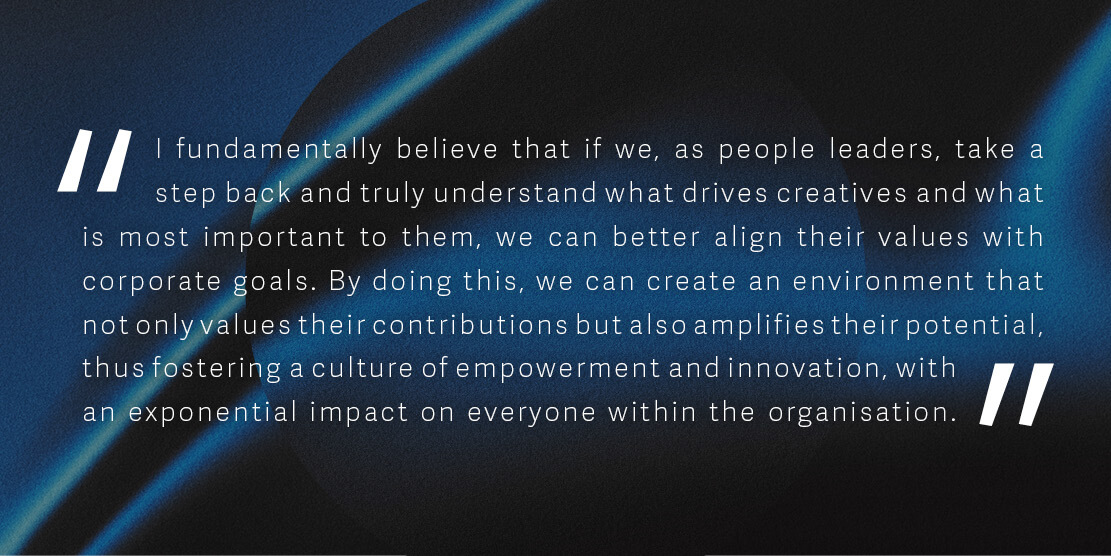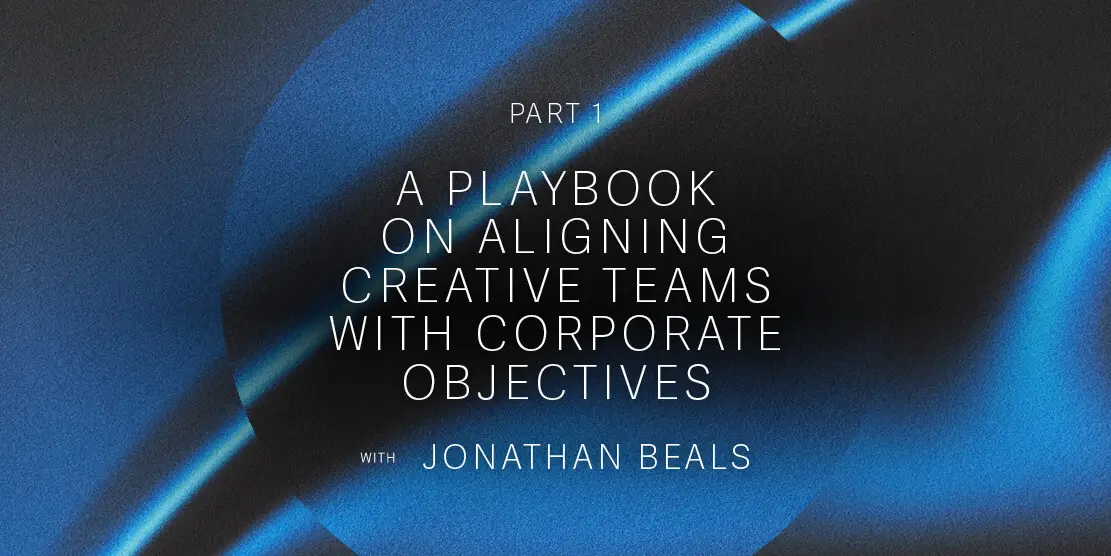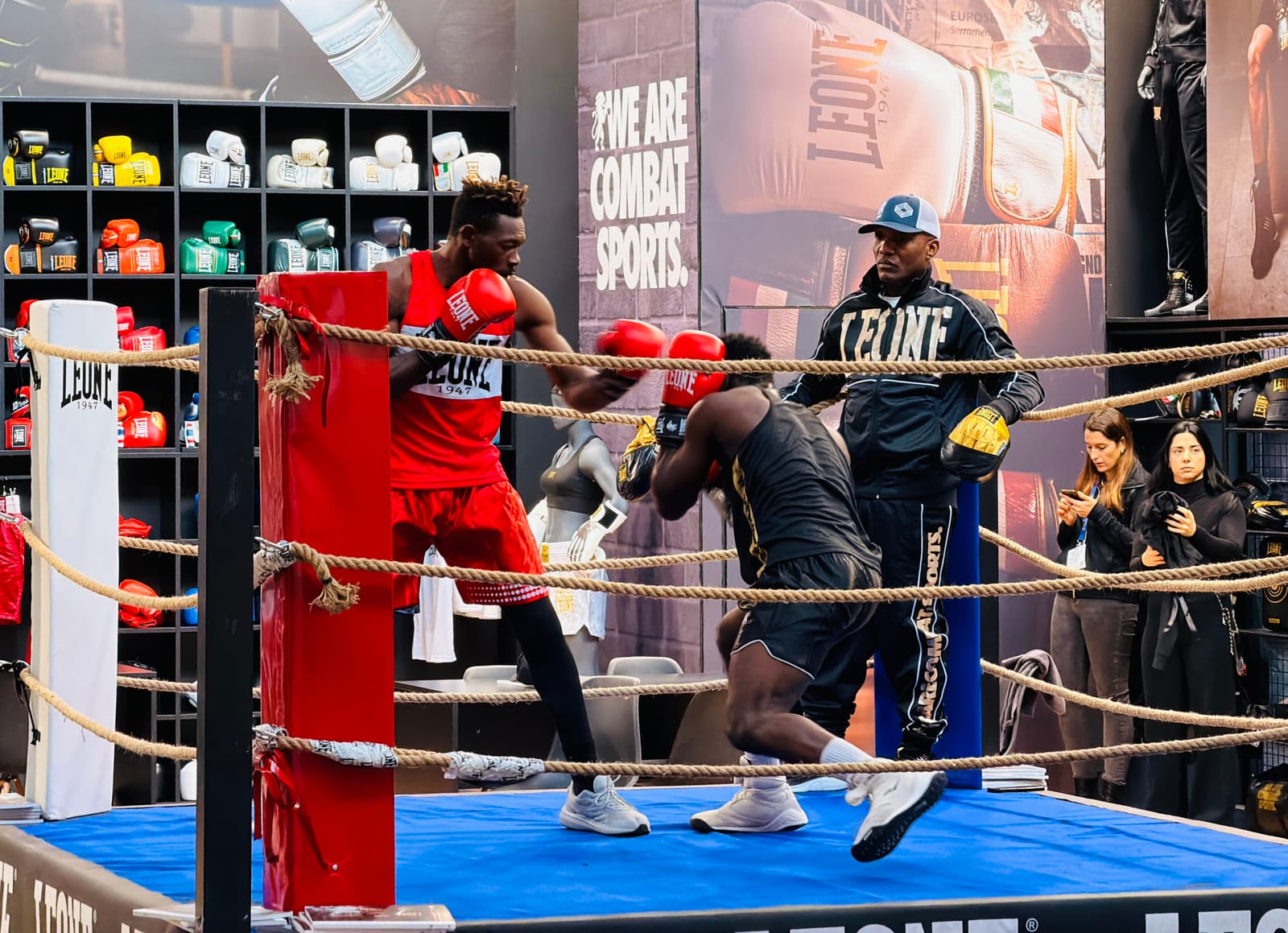“Great leaders are not the ones who have all the ideas; they are the ones who create an environment where great ideas can happen” - Simon Sinek
Hello, I am Jonathan, a visionary Program Director based in Portland, OR, renowned for driving digital transformation and innovation within high-performing design teams.
In a world where product and retail companies are increasingly internalising their digital product capabilities, a fascinating shift is occurring: more and more creatives are being led by leaders with a corporate operations background, rather than a creative’s background. These leaders, while skilled in their domains, often find themselves struggling to navigate the intricate dynamics of creative teams, whose motivations and work styles can be vastly different. As a result, many creatives find themselves in a paradox: they are passionate about their work, but struggle to feel valued, connected and to contribute meaningfully.

It's important to understand that creativity is a broad term, and it can be applied to everyone. It encompasses the traditional Designer or Artist titles, but also Engineers, Developers, business leaders, and IT professionals - anyone that solves problems through creative means.
Why Should You Trust Me?
This is a fair question, so here’s some context: I have 15 years of experience within the creative space, including 5 years delivering spectacular visuals in VFX and commercials, and 10 years designing products at Nike. At Nike, I founded and scaled a multi-million dollar department, leading an international team of Artists and Designers across footwear, apparel, and innovation for 6 years. I also began my career as a creative and had to quickly learn corporate business operations to effectively speak the business language so that I could advocate for my team.

And so, it became my mission to write a playbook and bridge the gap between corporate goals and creative values.
What follows is the outline of some of the strategies and principles I developed that helped me become a successful leader, effectively aligning the goals and KPIs of one of the world’s largest brands with the values of one of the highest-performing and successful teams at Nike, boasting an Employer Net Promoter Score (eNPS) score of 78, which is considered excellent.
Understanding the Creative Mindset
At a broad understanding, creativity in the corporate world is the ability to generate innovative ideas, solutions, and approaches that drive business growth and solve complex problems. It encompasses thinking outside the box, challenging the status quo, and bringing new perspectives to traditional business practices. Creativity involves not only artistic and design-driven innovation but also strategic thinking, process improvement, and the ability to adapt and respond to changing market demands. It is the engine behind product development, marketing strategies, operational efficiencies, and overall corporate success.
Two Important Definitions:
Manager: Someone who oversees tasks, processes, and resources to achieve specific goals. Managers focus on efficiency, organisation, and maintaining order, ensuring that daily operations run smoothly.
Leader: Someone who creates an environment where people feel inspired, safe, and valued. A leader is not just about having a title or position of authority; it's about taking care of those around you, setting a clear vision, and empowering others to achieve their best. True leadership involves empathy, trust, and the ability to build strong relationships, fostering a culture where individuals are motivated to work towards a common goal.

Importance of Creativity for Innovation and Growth
Creativity is essential for driving innovation, staying competitive, and solving complex problems. It enables the development of unique products and services, which differentiate companies in the market and attract loyal customers. Creative thinking fosters a positive work environment, enhancing employee engagement and attracting top talent. Ultimately, creativity supports sustainable development and long-term growth by enabling companies to adapt to changes, anticipate future trends, and implement innovative solutions that ensure continuous success.
I have observed that when creatives feel their creativity is not valued and they can no longer stay true to their values, innovation within the company comes to a halt. Creatives find themselves in this position when they have a manager and not a leader.
Common Challenges Creatives Face in Corporate Settings
Creatives often find themselves at odds with the structured, results-driven environment of corporate settings. The typical challenges include:
- Rigid Hierarchies: Corporate structures can be hierarchical and bureaucratic, which can stifle the free flow of ideas and discourage risk-taking.
- Focus on Short-Term Results: The emphasis on immediate results and quarterly performance can clash with the creative process, which often requires time, experimentation, and the freedom to fail.
- Lack of Understanding: Corporate leaders tend to lack a deep understanding of the creative process, leading to unrealistic expectations and inadequate support for creative initiatives.
- Limited Autonomy: Creatives often feel their autonomy is restricted by strict guidelines, procedures, and oversight, which can hinder their ability to innovate and express their ideas fully.
Creatives tend to not measure their success by high revenue growth or profit. Instead, their true north lies in making a meaningful impact through the use of their skills and talents.
Whether it's through developing immersive virtual reality experiences, drawing with crayons with their child, or composing an unforgettable symphony that moves the soul, creatives aim to ensure their work has a measurable and positive effect on the lives of others.
The realities of corporate business often present challenges for creatives. It is neither feasible for businesses to accommodate every desire of the creative, nor is it beneficial for creatives to conform to every rigid structure imposed by the company. So, what is the solution? Should both sides simply compromise and meet halfway? Absolutely not! This approach dilutes the essence of both sides, leading to subpar products and lackluster cultures.
Instead, we must strive to create environments where the strengths of both corporate structure and creative freedom can thrive. By understanding and valuing each other's needs and contributions, we can foster a culture of innovation and excellence. We need to work together to build a world where creativity and business acumen are not at odds, but powerful allies driving extraordinary success.
My Playbook for Leading World-Class Creative Teams in Corporate Settings
- It’s always about the people. ALWAYS
- Co-create a clear vision
- Lead by example
- Individualize coaching
- Provide resources and support
- Foster a culture of feedback and continuous improvement
- Empower your team and step back
In Part 2 of this series, I will dive deeper into each of these playbook steps. Until then, please feel free to reach out with all and any questions you might have, or indeed if you just want to have a conversation - my door is always open!






